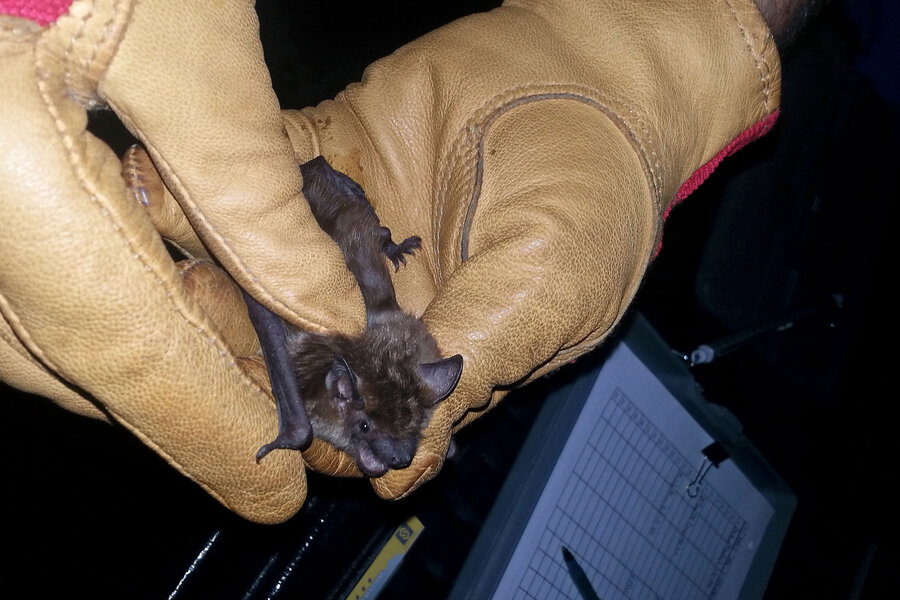Can bats be protected from wind turbines?
Loading...
Tom French says bats are "adorable," and he should know. The assistant director of the Massachusetts Division of Fisheries and Wildlife has visited caves housing as many as 175,000 of the winged mammals at once.
He says the creatures are increasingly changing from being seen as the creepy inspiration for tricks at Halloween to a creature of concern, and none too soon – rapidly proliferating wind turbines are killing as many as 70 bats per turbine annually, according to a media statement.
A new study in the Appalachians – where the rates of wind turbine bat mortality are the highest in the country, and probably the world – lays the groundwork for understanding how wind power is affecting these winged mammals.
"We're kind of laying the foundation before conservation decisions can be made," says David Nelson, an ecology professor at the University of Maryland and co-author of the study published in Ecological Applications.
The study used genetic information to track the bats killed in wind turbines in Maryland, Virginia, and West Virginia, and researchers calculated the effective population sizes of the two bat species affected, the red and hoary bats.
"Believe it or not, we really don’t know how many bats are out there," Dr. Nelson says. "We know how many are being killed, but we don’t know how many are there."
Effective population size, a calculation that uses genetic data to approximate the number of breeding animals in a species, showed that red bats are in the hundreds of millions, whereas the hoary bats are in the tens of thousands. By contrast, the effective population size of an endangered species runs in the tens.
Wind turbines have not resulted in the type of large-scale deaths that, for decades, have occurred when flocks of birds fly into a well-lit radio tower or skyscraper, but the relative danger from wind turbines might be greater for bats than it is for birds. Some have even suggested that the blade movement attracts the bats, although more research is needed.
"Bats get killed more frequently than we would have expected, and birds get killed less frequently than we would have expected," French says.
The new study not only identifies which species should be a top priority, but also clarifies how wind turbines are impacting the bat migration patterns. The study found that bats being killed in the Appalachians are largely local, meaning bats that spend their summers farther north are not being killed on their way through a major migration corridor, Nelson says.
One effective strategy for decreasing bird and bat deaths is called curtailment. This involves turning the turbines off during selected times or even single nights when a mass migration appears likely. The turbines maximize power output during high winds, but the bats fly only during calmer, less windy nights.
Power companies have mostly tried curtailment on a case-by-case basis, Nelson says, but his research shows that most bat deaths occur during the fall migratory season, so this solution could work for the area.
Although bats are the smaller and less visible population, they benefit from many of the measures companies are trying to limit bird deaths. In the massive wind farms of California, companies are experimenting with "shrouded" turbines from the Massachusetts-based company Ogin.
"The new turbines have bonnet-like flaps that ring the perimeter of the turbine," Andrew Curry wrote for National Geographic. "The compact design is meant to boost efficiency, sit below a typical bird flight path, and deter a bird's flight into the rotors."
As researchers continue to increase their understanding of how the wind turbines affect the bats, so does their ability to make careful decisions about solving the problems, but in the meantime, French is happy to receive phone calls from members of the public who want to create new homes for the bats that they find.
"We've had a real outpouring of concern for bats that I never knew was out there," French says.








